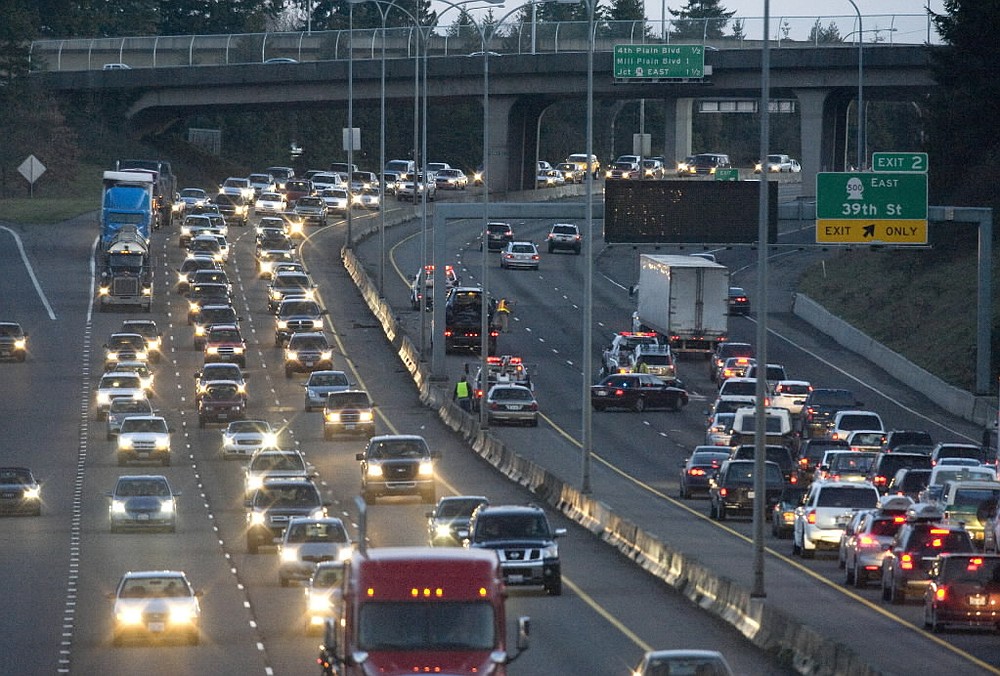The Columbia River Crossing project, which includes five miles of freeway improvements, was supposed to deliver a quicker connection between Interstate 5 and state Highway 500.
But engineers have proposed stripping out the Vancouver project, also known as SR 500, in the quest to drive down the crossing’s overall price tag.
Instead, the Washington Department of Transportation has applied for $147 million in federal economic stimulus funding to improve the interchange two miles north of the Columbia River. U.S. Transportation Secretary Ray LaHood is expected to select projects in January, and construction could start well before the crossing itself.
“SR 500 wouldn’t be part of the capital costs associated with CRC,” crossing spokeswoman Mandy Putney said.
Tapping a different pot of money for the interchange at Highway 500 effectively reduces the price tag of the rest of the crossing project. That would ease the burden for state, federal and local sources of money that will be required to replace the existing drawbridges across the river, undertake five miles of interchange improvements and extend light rail north to Clark College.
Planners now estimate the trimmed-down version of the crossing will cost between $2.6 and $3.6 billion.
Safety issue
Transportation engineers have long contemplated the possibility of creating a “full-system” interchange at I-5 and Highway 500. The plan calls for two new major connections, one being a ramp from 500 westbound to I-5 northbound and the other a tunnel from I-5 southbound to 500 eastbound.
Currently, motorists make those connections through a labyrinthine series of stops and turns on local roads.
Along with the additions, the project would eliminate two existing connections: The looped offramp from I-5 southbound to 39th Street and the connection from 500 to Fourth Plain Boulevard.
The idea is to reduce accidents by minimizing the need for drivers to weave from lane to lane.
Property acquisitions would be minimal, planners said.
“Those pieces have very little impact to residents and businesses,” said Anne McEnerny-Ogle, chairwoman of the Shumway Neighborhood Association.
City officials are concerned that eliminating the connection could divert more traffic onto city streets such as St. Johns, 39th, 33rd and 29th, said Matt Ransom, the city’s transportation planning manager.
“Access to the interstate system is very special,” Ransom said. “We don’t take issues like that lightly.”
At the city’s behest, state transportation planners are looking into what it would take to maintain the connection between 500 and Fourth Plain. The rebuilt interchange includes a series of separated ramps at different grades. A new ramp from 500 to Fourth Plain would have to slide west of the current ramp, eating into 20 to as many as 37 properties in the Shumway neighborhood.
“Some of the ramps go up in elevation, down in elevation and they intertwine with one another,” said Casey Liles, highways engineering manager for the bi-state crossing office. “So we need additional space.”
McEnerny-Ogle said the neighborhood supports replacing the I-5 Bridge, but residents are deeply concerned about the impact of the freeway encroaching on homes miles away from the river.
“We are suggesting they drop their plans north of Fourth Plain,” she said. “Their focus should be the bridge, not widening I-5 up here.”
Erik Robinson: 360-735-4551 or erik.robinson@columbian.com.



